By Alex Trukan
Players in many positions are becoming more versatile, the winger is not an exception. Recently, there has been a shift from traditional wingers operating mainly on the touchline and delivering crosses, to more well-rounded wide players covering a more areas on the pitch and producing shots on goal and key opening passes. Having this kind of a player in your team gives you more opportunities for rotation of positions – for example central midfielders might be more involved out wide. More versatile wingers also encourage full backs to get involved on the opposition's half and ‘take over’ the responsibilities of a ‘traditional’ winger.
It's important to mention though that being a ‘playmaking’ winger does not prevent him from playing in wide areas. The spaces where winger can operate will be also largely dependent on the roles of other players around him. For example, if the full back playing on the same side likes to get involved up front, it will naturally force winger to come inside. The challenge is cooperation between players in different positions rather than actions in isolation.
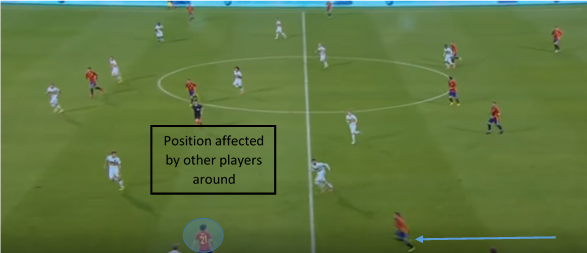
One of the key types of movements that playmaking winger might make is rotation with central midfielder. This can happen bin both halves of the field. For example, when the centre backs have the ball, the winger might decide to come deeper and clear the space out wide which will be filled by a central midfielder. This helps to create space in front of the centre backs and potentially allow the team to play forward.
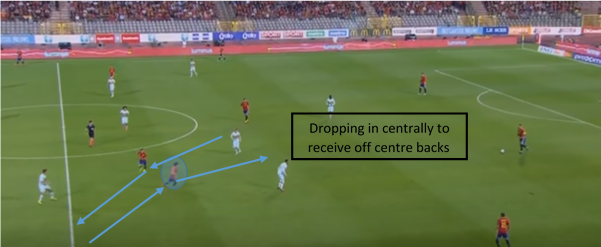
Another option involves starting centrally and trying to receive the ball directly from the centre backs. This is useful when the team wants to play through the middle. From this position, wingers might choose to make a movement into wider areas.
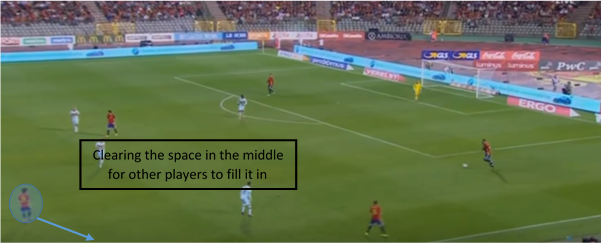
This type of movement creates an option for the full back in case he gets on the ball. It also allows more space for the central midfielders to get on the ball. As can be seen below, clearing the space in the middle helps the other central midfielder to switch the play to the other side.
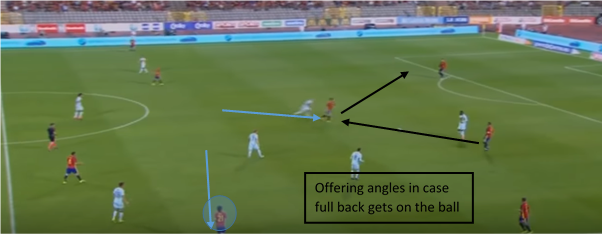
As soon as the ball is on the opposition half, playmaking type of wingers often chooses to drive centrally and combine play with other midfielders. Offering support from other players (striker, central midfielder) as well as creating space for each other would be the key to allow this to happen.
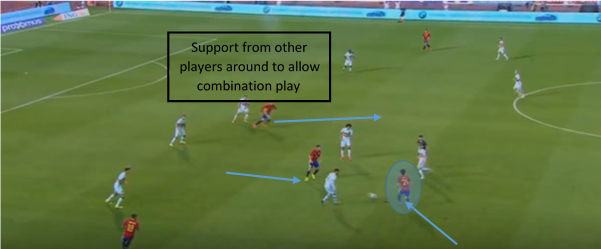
Coming inside might also happen off the ball, after rotating with central midfielder or clearing the space for the full back to come in. In order to be able to get on the ball, a player might choose to look for spaces just in behind the opposition midfield line. Getting on the ball in these areas will allow him to play through balls and key passes into strikers. Trying to be on a different angle than the strikers, as well as having open body position to play forward, is important technical detail to mention.
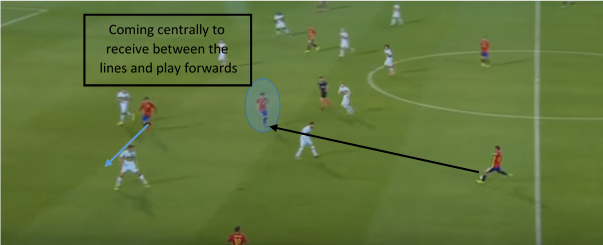
A great example of a playmaking winger is David Silva. Despite all of the quality he provides on the ball, his most important strength lies in his work off the ball. The way he creates space for others, as well as intelligently moves to receive the ball himself, makes the life of the players around him much easier. This style of play can be classed as ‘quiet’ playmaking which is a great addition to all his qualities when in possession such as getting past players, through balls and combination play.
By Alex Trukan, Development Coach, Nottingham Forest
@AlexTrukan


